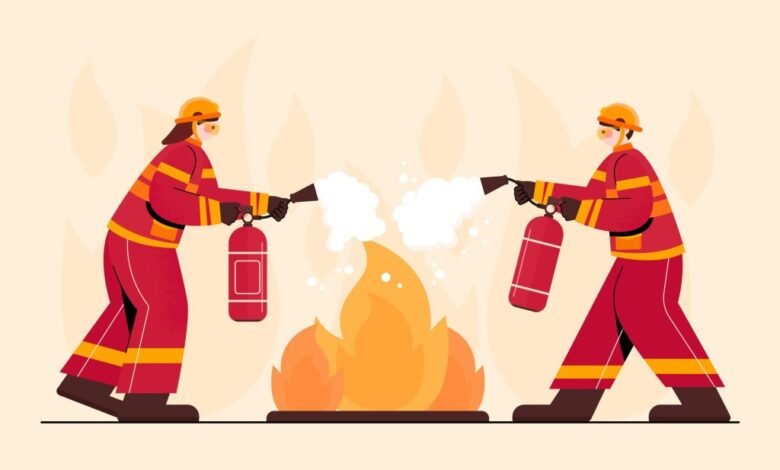How to Protect Your Home Insurance from Wildfire Risk in USA 2025 (Before It’s Too Late)

With wildfires increasing in frequency and intensity across many U.S. states, homeowners face rising insurance premiums, non-renewals, and even dropped coverage. If you’re asking “Can I lose insurance because of wildfire risk?”, the answer is yes—especially in high-risk areas. Acting now can help shield your home—and your wallet—before it’s too late.
1. Why Wildfire Risk Threatens Home Insurance
Climate change, expanding urban-wildland interfaces, and intense drought cycles are pushing insurers to reassess exposure. As wildfire seasons grow longer, insurers may:
- Raise premiums significantly
- Decline new policies
- Non-renew existing ones—or even drop coverage altogether
Indeed, “Can I lose insurance because of wildfire risk?” isn’t hypothetical—many homeowners in states like California, Colorado, Arizona, and Oregon have already seen policies canceled or refused. According to the California Department of Insurance, thousands of non-renewals occurred in wildfire-prone counties just after the 2020 season. [^1]
2. Understand Your Risk: Map and Zoning Tools
Before taking protective action:
- Use FEMA’s wildfire risk maps to assess hazard zones.
- Check local zoning and wildfire mitigation guidelines.
- Confirm your property’s inclusion in a Wildland-Urban Interface (WUI) area—high priority for insurers.
Being aware of your risk zone enables targeted home improvements that insurers value. Land within a WUI is more likely to have limited fire-fighting access—making it a top risk indicator during premium calculations.
3. Harden Your Home Against Wildfire
The most effective way to protect insurance is by reducing exposure. Insurers often incentivize mitigation efforts through discounts. Consider:
- Roof & siding upgrades: Opt for Class A fire-rated roofing and non-combustible siding.
- Ember-resistant vents: Seal attic vents to block ember entry.
- Defensible space: Maintain 30+ feet of clear area around structures.
- Fire-resistant landscaping: Plant low-flammable vegetation; mulch smartly.
- Deck safety: Use fire-resistant materials and keep the area clear of combustibles.
The NFPA’s Firewise USA® program provides comprehensive guidelines for these measures. Learn more at the National Fire Protection Association website. [^2]
4. Join a Community Program: Firewise and Beyond
Insurance providers increasingly reward homeowners in Firewise USA® communities. Certification shows collective wildfire resilience:
- Grants up to 5–15% premium discounts in many states
- Improves chances of renewal
- Shows insurers you’re proactively managing risk
Joining involves organizing a local project, documenting progress, and submitting annual reports through your state forestry or fire prevention office. For a full list of approved communities, visit NFPA’s Firewise USA® database. [^2]
5. Be Proactive: Engage With Your Insurer
Insurance discounts and policy stability start with open communication. Ask your agent these critical questions:
- “Can I lose insurance because of wildfire risk?”
- “What to do if your home insurance is dropped due to wildfire risk?”
If your policy is at risk or already canceled, insurers usually require:
- Risk assessments
- Completion of home-hardening and defensible space steps
- Official documentation
Once you deliver proof, reinsurers or available companies may reconsider—especially if you’re in a certified Firewise community.
6. What to Do If Your Home Insurance Is Dropped Due to Wildfire Risk
No one wants to ask, “What to do if your home insurance is dropped due to wildfire risk?”, but having a plan is vital:
- Review your cancellation notice—check applicable state regulations.
- Understand the deadline for securing new coverage.
- Immediately act on required mitigation measures (e.g., defensible space, ember-resistant upgrades).
- Get documentation (photos, receipts, inspection reports).
- Shop around—some specialty carriers offer coverage in high-risk zones.
- Work with state-sponsored programs, such as California’s FAIR Plan, to stay insured during repairs.
- Join community mitigation programs, notably Firewise USA®, to enhance credibility.
Even if you’ve lost coverage, implementing these steps shows commitment—and often unlocks options to restore your policy.
7. Invest in Supplemental Coverage or State Plans
Standard home insurance may be restricted—or unavailable—year‑round in high-risk regions. Consider alternative options:
- State FAIR or Fair Access to Insurance Requirements programs
- Mutual aid associations or state-sponsored insurers
- Wildfire-only coverage riders for existing homes
- Excess or umbrella policies to supplement gaps
These may cost more, but they help protect your mortgage and financial health when traditional policies fall short.
8. Leverage Technology & Monitoring
Innovative tech additions can support your wildfire strategy—and please insurers:
| Technology | Benefit |
|---|---|
| Home sensors (smoke, heat) | Fast detection reduces damage |
| Weather tracking apps (IVAN, etc.) | Alerts warn and support evacuation decisions |
| Smart irrigation/fire suppression systems | Maintain landscape humidity and fire breaks |
Be sure to check for insurance discounts on smart home equipment—they can add up.
9. Stay Updated: 2025 Regulation & Insurance Trends
As of 2025, wildfire risk is reshaping insurance regulation:
- California’s Safer from Wildfires regulations mandate insurers pass mitigation savings to policyholders.
- Colorado is developing similar wildfire premium reductions.
- Oregon and Arizona carriers are piloting programs with defensible space verification.
These changes underscore the importance of active risk management—even if your home hasn’t been directly affected.
10. FAQs
Q1: Can I lose insurance because of wildfire risk?
Yes—especially if you’re in a wildfire-prone zone without risk mitigation. Insurers may refuse to renew or drop your policy to reduce financial exposure.
Q2: What to do if your home insurance is dropped due to wildfire risk?
Implement mitigation improvements immediately, document everything, seek coverage through specialized plans or state programs, and reapply once you’ve reduced risk.
Conclusion: Take Action Before It’s Too Late
Wildfire risk presents real dangers—and real costs. But you don’t have to be powerless:
- Harden your home with structural upgrades
- Clear defensible space and maintain your landscape
- Document mitigation efforts diligently
- Join Firewise USA® or similar progress-oriented communities
- Talk to your insurer early and often
- Backup with supplemental coverage if necessary
By asking and answering key questions—like “Can I lose insurance because of wildfire risk?” and “What to do if your home insurance is dropped due to wildfire risk?”—you position yourself ahead of the storm.
Taking these actions in 2025 means protecting your home, preserving your coverage, and building resilience for years ahead.
📎 Useful Resources & Outbound Links
- FEMA Wildfire Risk to Communities Viewer
- NFPA Firewise USA® Program
- California’s FAIR Plan
- 2025 Insurance Regulation Updates — National Association of Insurance Commissioners




